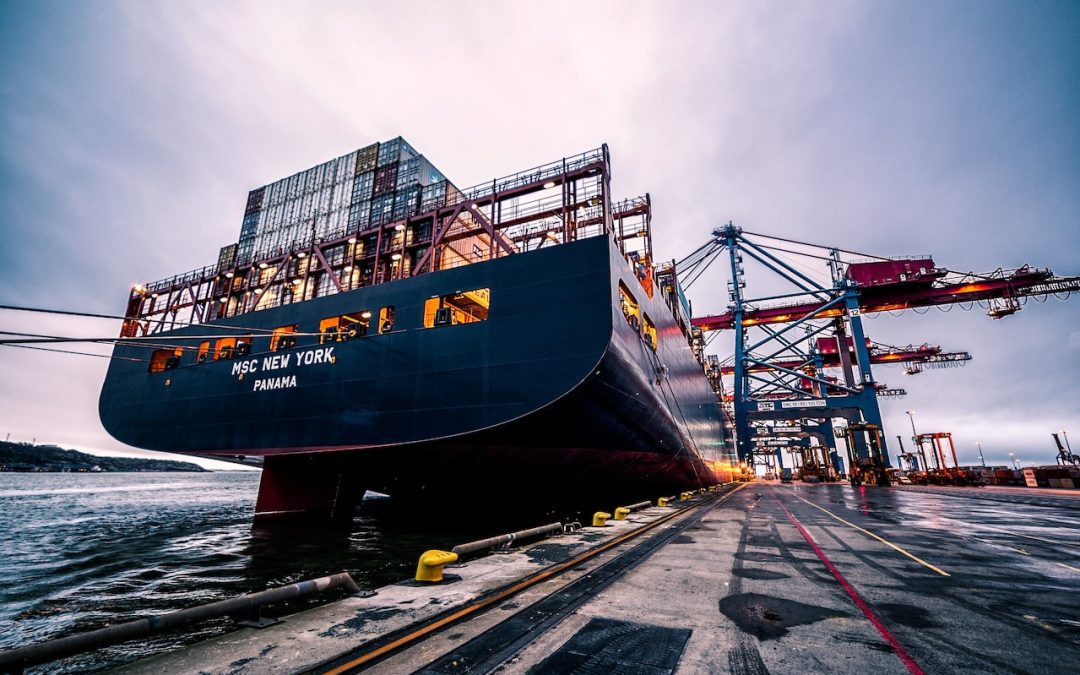无论您是在英国境内还是国际范围内运输货物,彻底了解运输流程都很重要。 您还能如何确保您的货物完好无损地到达目的地?
在这里,我们介绍了整个运输过程中的预期内容。
相关人员的角色和责任
让我们首先定义各方是什么以及他们做什么。
托运人
托运人是负责在运输前包装和准备货物的人。
这可能就是你。 或者可能是供应商向您发送您制造和销售的最终产品的业务零件。 托运人承担运费,并在承运人到达提货时签署提单。
货运代理
货运代理负责将货物从出发地运输到最终目的地的所有不同方面。
这意味着货运代理(可以是个人或公司)的责任是巨大的。 货运代理整理文件、管理风险、组织一个或多个承运人并寻找最可靠和最具成本效益的运输方式来满足您的需求。
船公司/承运人
承运人是指通过陆路、水路或空运将您的货物从 A 地实际运输到 B 地的个人或公司。 他们在运输过程中对它们负有法律责任。
收货人
收货人是进口商,负责缴纳关税和运费。
大多数情况下,货物的买方是收货人。
运输流程
现在我们已经整理好了定义,让我们看看它是如何工作的。
1 – 报价
首先,进口商或收货人向供应商或发货人订购货物。
买方通常会要求报价,其中可以包括形式发票; 此类发票可能会发生变化。 一旦买方批准报价,供应商将创建采购订单。 这是一份描述订单详细信息及其费用的合同。
2 – 国际贸易术语解释通则
采购订单应说明其同意众多国际贸易术语解释通则中的哪一项。
国际贸易术语解释通则是国际公认的代码,详细说明了运输交易中买方和卖方的任务、风险和成本。 博客中详细了解我们为何使用国际贸易术语解释通则及其含义。
必须为交易选择正确的国际贸易术语解释通则。 如果没有,买家可能需要付出比他们最初想象的更多的血汗钱。
国际贸易术语解释通则还确定了哪一方负责寻找货运代理。 为了便于介绍,我们假设收货人已按 EXW 条款购买了货物,因此负责货运旅程的所有阶段。
3 – 选择货运代理
有了采购订单,买方现在需要为其货物安排运输。 通过聘请货运代理,他们可以摆脱自己组织运输所带来的所有压力和管理,因为货运代理的职责是安排最佳的运输方法和路线。
货运代理将要求供应商提供文件。 其中包括装箱单、原产地证书和危险品表格。 (不确定什么是危险品?请阅读本文)。
4 – 货物收集
货运代理的职责之一是指导承运人。
货物包装好后,将预订承运人在特定日期的特定时间提取货物。
5 – 提单
当承运人到达时,他们将签发提单(BoL)。 这种复杂的物流运输单据在货物运输中发挥着至关重要的作用,因为它是各方之间的合同,在货物运输过程中作为所有权证明,并在另一端作为收货证明。
有关 BoL 角色的更多信息,请单击此处。
6 – 移动中
接下来就是旅程了。 您的货物将被小心装载并通过公路、铁路、海运或空运到达目的地。 如果他们要离开该国,他们将通过出口海关进行处理并过境。
7 – 清关
当您的货物到达目的地国家/地区时,必须首先通过进口海关清关,然后才能继续运送给发货人。
每个国家/地区都有不同的进出口规则,这意味着您所需的文件以及关税和税款金额可能会有所不同。 有关清关货物的更多信息,包括您通常需要什么文件以及需要多长时间,请阅读此博客。
8 – 交货日
进口清关后的最后一步是前往买方提供的送货地址。
追踪您的货物
当您的货物在运输途中时,这可能是一个令人担忧的时期。 如果事情不顺利怎么办?
技术在跟踪中发挥着重要作用,可以让您安心并提前提供有关潜在问题的信息。 专业的承运公司应该提供强大的跟踪服务,让您实时了解货物所在位置。
意外问题
有时,突然发生的事情可能会导致您的货件行程出现问题。 导致延误的情况可能包括:
天气
恶劣的天气条件可能会导致飞机无法起飞、运输船在海上抛锚、树木倒下并堵塞重要道路。 所有这些情况都可能导致巨大的延迟。
港口拥堵
在海上交通中,集装箱船由于空间不足而必须在已经满员的港口外等待,这可能会对交货时间产生灾难性的连锁反应。
罢工
无论是港口工人、海关工作人员还是仓储人员,人手的缺乏都会导致装卸和处理货物的速度变慢。
标签错误和包装不当的商品
运输标签必须清晰正确,因为它们显示有关您的货物的重要信息。 这意味着标签不当可能会导致海关延误,甚至导致您的包裹永久丢失。
文件不正确
缺少文件、不准确的描述以及模糊或难以辨认的文字都是文件方面可能出现的问题,这可能意味着您的货物在您找到正确的文件时被扣留 - 并为此特权付费。
极端情况
有时会发生疯狂的事情,在航运界产生蝴蝶效应。 您听说过在美国马里兰州搁浅的集装箱船吗?
全球活动
世界各地发生的事件可能会给出口商和进口商带来大问题。 例如,COVID-19 大流行导致运费飙升,集装箱滞留在错误的地方,并且至今仍在影响着航运业。
尽管大多数货物都能及时到达目的地,但总有可能出现问题。 在此博客中阅读有关如果您的货物丢失或损坏时您应该做什么的所有信息。
需要多长时间?
好吧好吧。 问题有点在于“一根绳子有多长”。 但这里有一些近似值。
如果货物在英国境内或欧洲稍远的地方,公路运输的货物 在英国,您的货物可以在几天之内送到任何地方。 要到达德国,您需要最多 5 天的时间。
海运通常是最慢的运输方式,货物最多需要 45 天才能到达目的地港口。
铁路货运比集装箱船运输快,但比空运慢。 通过火车运输货物通常至少需要几天的时间,具体取决于旅程的距离。 较长的旅程,例如从中国到英国,可能需要数周时间。
飞机将货物运送到其他国家的速度非常快,并且货物可以空运到世界任何地方。 要将货物从中国运送到英国,您需要 4 至 8 天的时间。
您的货运需要多长时间 阅读此博客。
知道会发生什么会节省您的时间
了解将货物从 A 地运送到 B 地的过程将确保您做好尽可能的准备,从而节省您的时间和金钱。
但运输应该没有压力,特别是有货运代理为您处理一切。
您有一些与货运相关的管理需要整理吗? 让我们帮忙吧。 立即联系千禧年。

